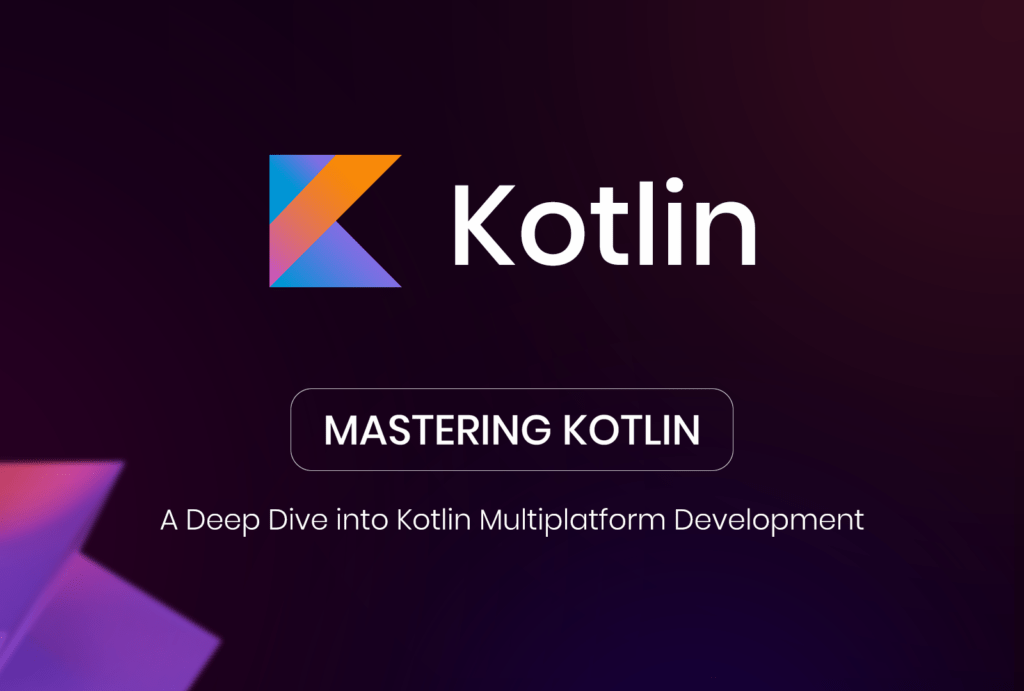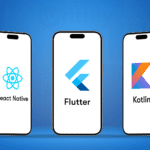Kotlin Multiplatform Development is a powerful technology that enables developers to build cross-platform apps with ease. With the increasing demand for apps that work seamlessly on multiple platforms like Android and iOS, Kotlin Multiplatform provides a solution to overcome the challenges of code duplication and platform inconsistencies.
By using Kotlin Multiplatform, developers can write shared code that can be used across different platforms, eliminating the need to rewrite code for each platform. This significantly reduces development time and effort, allowing developers to focus on creating innovative features and improving user experience.
Why Kotlin Multiplatform is important for cross-platform app development
The significance of Kotlin Multiplatform in enabling cross-platform app development cannot be overstated. It allows developers to leverage their existing knowledge of Kotlin, a modern and expressive programming language, for building apps on various platforms. This means that developers who are familiar with Kotlin for Android app development can now extend their skills to iOS app development as well.
Moreover, Kotlin Multiplatform promotes code reuse and modularity, making it easier to maintain and update applications across platforms. It also helps in achieving consistency in user experience by sharing business logic, data models, and networking code between Android and iOS projects.
Advantages of Kotlin Multiplatform Development
In summary, Kotlin Multiplatform Development offers the following advantages for building cross-platform apps:
- Reduced code duplication: Developers can write shared code that runs on multiple platforms.
- Platform consistency: Kotlin Multiplatform ensures consistent behavior across different platforms.
- Faster development: Reusing code saves time and effort.
- Improved maintenance: Changes can be made in one place and reflected across all platforms.
Now that we have introduced the concept of Kotlin Multiplatform Development, let’s dive deeper into understanding how it works and its benefits in the next section.
Understanding Kotlin Multiplatform
Kotlin Multiplatform is a powerful technology that allows developers to share code between different platforms, enabling efficient cross-platform app development. Here are some key points to understand about Kotlin Multiplatform:
What is Kotlin Multiplatform?
Kotlin Multiplatform is a feature of the Kotlin programming language that enables code reuse across various platforms such as Android, iOS, web, desktop, and server-side. It allows developers to write common code once and use it across different platforms, while still leveraging the native programming benefits of each platform.
How does it facilitate code sharing between different platforms?
Kotlin Multiplatform provides mechanisms for sharing common code among all platforms or among specific platforms included in a project. With Kotlin Multiplatform, developers can create shared modules that contain platform-independent code, which can be used by platform-specific modules that implement platform-specific logic. This approach minimizes code duplication and allows for efficient sharing of business logic across multiple platforms.
Advantages of using Kotlin Multiplatform for cross-platform development projects:
- Code Reuse: Kotlin Multiplatform enables significant code reuse by allowing developers to share common code across various platforms. This reduces development time and effort spent on writing and maintaining separate codebases for each platform.
- Native Programming Benefits: Unlike other cross-platform frameworks, Kotlin Multiplatform allows developers to leverage the native programming benefits of each platform. This means that developers can write platform-specific code when necessary, while still using shared code for business logic.
- Interoperability: Kotlin Multiplatform seamlessly integrates with existing Java and Objective-C/Swift codebases, making it easy to adopt in projects with legacy code.
Limitations of Kotlin Multiplatform that developers should be aware of:
- Platform-Specific Differences: While Kotlin Multiplatform facilitates sharing of common code, there may still be certain differences between platforms that require platform-specific implementation. Developers need to be aware of these differences and write platform-specific code when necessary.
- Learning Curve: Kotlin Multiplatform introduces new concepts and approaches to development. Developers may need to invest time in learning and understanding these concepts to effectively utilize the technology.
Understanding Kotlin Multiplatform is key to leveraging its benefits for cross-platform app development projects. It provides a powerful solution for code sharing, allowing developers to write efficient and maintainable code that works seamlessly across multiple platforms.
For more information on Kotlin Multiplatform, you can check out this detailed guide which covers various aspects of the technology.
Use Cases and Benefits of Kotlin Multiplatform Development
Kotlin Multiplatform has gained popularity among developers due to its potential for creating cross-platform mobile applications and sharing code between Android and iOS platforms. Here are some key use cases and benefits of adopting Kotlin Multiplatform for your development projects:
1. Exploring the potential of Kotlin Multiplatform for creating cross-platform mobile applications
With Kotlin Multiplatform, you can write shared code that can be used across different platforms, including Android and iOS. This eliminates the need to develop separate codebases for each platform, saving time and effort.
2. Sharing code between Android and iOS platforms using Kotlin Multiplatform
Kotlin Multiplatform allows developers to share business logic, data models, network communication, and other non-platform-specific code between Android and iOS projects. This enables consistent behavior across platforms and reduces code duplication.
3. Benefits of adopting a unified codebase approach with Kotlin Multiplatform
Using a unified codebase approach with Kotlin Multiplatform brings several advantages. It simplifies maintenance as changes only need to be made in one place. It also improves productivity by allowing developers to leverage their existing skills and knowledge across multiple platforms.
4. Example or Case Study: A successful app built with Kotlin Multiplatform highlighting its benefits
One example of a successful app built with Kotlin Multiplatform is the Ktor HTTP client library. Ktor uses Kotlin Multiplatform to provide a consistent API for making HTTP requests on both Android and iOS platforms. By sharing the core networking logic, Ktor saves development time while ensuring reliable performance on both platforms.
By leveraging Kotlin Multiplatform, developers can streamline their development process, reduce code duplication, and build high-quality cross-platform apps that work seamlessly on both Android and iOS. However, it is important to consider the challenges associated with platform-specific differences and ensure proper testing to ensure optimal performance on each platform.
Getting Started with Kotlin Multiplatform Development
Cross-platform app development has become increasingly popular as businesses strive to reach a wider audience across different platforms. Kotlin Multiplatform Development offers a powerful solution for building cross-platform apps with shared codebases. Here’s a step-by-step guide to getting started with Kotlin Multiplatform:
1. Setting up the Kotlin Multiplatform Project Structure
- Begin by creating a new project in your preferred Integrated Development Environment (IDE). Choose the Kotlin Multiplatform template.
- Set up the project structure by defining common source sets and platform-specific modules for Android and iOS.
- Ensure that you have the necessary SDKs and frameworks installed for both platforms.
2. Writing Shared Code for Multiple Platforms
- Start by writing the shared code that will be used across different platforms. This code should contain the core logic and functionality of your app.
- Use the
expectandactualkeywords to define platform-specific interfaces and implementations. - The shared code can include data models, business logic, network operations, and more.
3. Implementing Platform-Specific Logic in Android and iOS
- Once the shared code is in place, create separate modules for Android and iOS within your project.
- In each platform-specific module, implement the platform-specific logic using the
actualkeyword. - Access platform-specific APIs, UI components, or any other features that are unique to each platform.
4. Testing the Shared Codebase and Platform Modules
- To ensure the correctness and reliability of your app, write tests for both the shared codebase and platform-specific modules.
- Use testing frameworks like JUnit or XCTest depending on the platform.
- Test the shared codebase on both Android and iOS to verify its compatibility.
By following these steps, you can quickly set up a Kotlin Multiplatform project, write shared code for multiple platforms, implement platform-specific logic, and test your app. This approach allows you to maximize code reuse, streamline development efforts, and ultimately build high-quality cross-platform apps.
For more information on using expect and actual in Kotlin Multiplatform projects, refer to the official Kotlin documentation.
Advanced Techniques in Kotlin Multiplatform Development
In the world of Kotlin Multiplatform Development, there are several advanced techniques that can further enhance the development process and provide even more benefits. Let’s explore some of these techniques:
Building Cross-Platform Apps with Kotlin Multiplatform
Kotlin Multiplatform allows you to build apps that run seamlessly on multiple platforms like Android, iOS, web, desktop, and server-side. By sharing code between different platforms, you can reduce development time and effort while maintaining native programming benefits.
Best practices for code organization and architecture
To ensure maintainability and scalability, it is essential to follow best practices for code organization and architecture in Kotlin Multiplatform projects. This includes using modularization techniques, separating platform-specific code from shared code, and applying design patterns such as MVVM or Clean Architecture.
Ensuring a consistent user interface with Compose Multiplatform
Compose Multiplatform is a powerful UI toolkit that allows you to create user interfaces that work consistently across different platforms. By leveraging Compose Multiplatform, you can write UI code once and have it adapt to the specific platform requirements.
Building multiplatform libraries
Kotlin Multiplatform enables library authors to create multiplatform libraries with common code and platform-specific implementations for JVM, web, and native platforms. By building multiplatform libraries, developers can reuse code across different projects and platforms.
Considerations for API design and versioning
When developing multiplatform libraries or sharing code between platforms, it is crucial to carefully design APIs to ensure compatibility and ease of use. Additionally, versioning strategies should be implemented to manage changes in the library’s API over time.
Approaches to testing shared code and platform-specific implementations
Testing is an integral part of software development, and Kotlin Multiplatform provides mechanisms for testing shared code as well as platform-specific implementations. It is important to adopt testing strategies that cover both shared functionality and platform-specific behavior.
Recommended tools and techniques for debugging
Debugging issues that arise from platform differences can be challenging in Kotlin Multiplatform projects. However, there are several tools and techniques available to help developers in this process. For example, the Kotlin Multiplatform project provides a debugging plugin for IntelliJ IDEA, which allows you to debug shared code running on different platforms.
By utilizing these advanced techniques in Kotlin Multiplatform Development, developers can unlock the full potential of cross-platform app development and create high-quality applications that work seamlessly across multiple platforms.
Continuous Integration, Delivery, and Deployment for Kotlin Multiplatform Projects
In the world of Kotlin Multiplatform Development, integrating projects into a Continuous Integration/Continuous Deployment (CI/CD) pipeline is crucial for ensuring smooth and efficient development processes. Here are some key points to consider in this context:
1. Automated Building, Testing, and Deployment
Integrating Kotlin Multiplatform projects into a CI/CD pipeline allows for automated building, testing, and deployment. This streamlines the development process, reduces manual errors, and ensures consistent code quality across different platforms.
2. Handling Platform-Specific Dependencies
When integrating Kotlin Multiplatform projects into a CI/CD pipeline, it’s essential to handle platform-specific dependencies effectively. This involves managing dependencies and ensuring compatibility across different platforms during the CI/CD process.
By using CI/CD practices in Kotlin Multiplatform development, teams can achieve greater efficiency, consistency, and reliability in their cross-platform app development efforts.
The Future of Cross-Platform App Development with Kotlin Multiplatform
Kotlin Multiplatform is continuously evolving to meet the demands of the ever-changing landscape of cross-platform app development. As technology advances and new platforms emerge, Kotlin Multiplatform is positioning itself as a versatile and powerful solution for building apps that can seamlessly run on multiple devices. Here are some insights on how Kotlin Multiplatform is shaping the future of cross-platform app development:
1. Expanding platform support
Kotlin Multiplatform initially focused on Android and iOS development, but it has been steadily expanding its platform support. With the recent introduction of Kotlin Multiplatform for Web (KMP-WEB), developers can now leverage their Kotlin skills to build web applications using shared code. This opens up new possibilities for creating cross-platform experiences across mobile and web.
2. Enhanced tooling and libraries
As Kotlin Multiplatform gains popularity, more tools and libraries are being developed to support its ecosystem. These tools aim to simplify the development process and improve productivity for Kotlin Multiplatform projects. For example, frameworks like Ktor offer a consistent HTTP client and server API that can be used across all supported platforms, reducing the need for platform-specific implementations.
3. Integration with emerging technologies
Kotlin Multiplatform is also embracing emerging technologies to stay relevant in the future. For instance, it seamlessly integrates with Jetpack Compose, a modern UI toolkit for Android, enabling developers to build cross-platform user interfaces using a declarative approach. This integration allows for code sharing not only at the business logic level but also at the UI level.
4. Collaboration and community support
The future of Kotlin Multiplatform development relies heavily on community collaboration and support. Developers are actively sharing their experiences, best practices, and libraries through online communities, conferences, and open-source contributions. This collaborative environment fosters innovation and drives the evolution of Kotlin Multiplatform.
Kotlin Multiplatform is constantly evolving to support new platforms, technologies, and emerging trends in cross-platform app development. With its expanding platform support, enhanced tooling, integration with emerging technologies, and strong community backing, Kotlin Multiplatform is poised to play a significant role in the future of building cross-platform apps.
Conclusion
Embrace the power of Kotlin Multiplatform for building innovative apps that run smoothly on any device. By leveraging the capabilities of Kotlin Multiplatform, developers can create cross-platform applications with shared code, reducing duplicity and inconsistencies across platforms.
Suggest resources (books, courses, etc.) for further learning about Kotlin Multiplatform Development. To further delve into the world of Kotlin Multiplatform Development, consider exploring resources such as “Kotlin Multiplatform Mobile Development: Build Cross-Platform Applications with Kotlin” by James Williams and “Kotlin Multiplatform Programming: Build real-world projects using multiplatform programming with Kotlin” by Rashi Karanpuria. Online courses like “Kotlin Multiplatform Mobile” on LinkedIn Learning offer comprehensive insights into this technology.
In conclusion, Kotlin Multiplatform Development offers an exciting opportunity to streamline app development for multiple platforms. By embracing this innovative approach, developers can create robust cross-platform apps while reducing development time and effort. There are numerous resources available to deepen your understanding and proficiency in Kotlin Multiplatform Development, empowering you to harness its full potential for your future projects.
- Anubhav Jangid
- Anubhav Jangid















